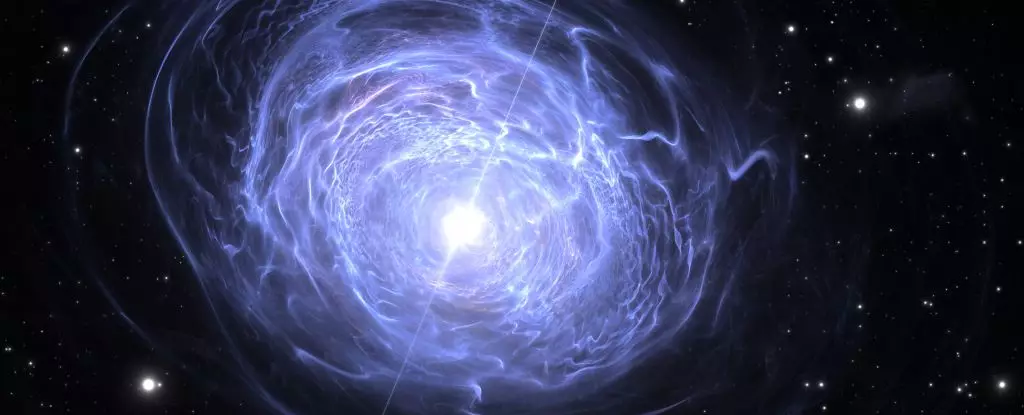Astronomers have recently detected a peculiar signal emanating from a neutron star named ASKAP J193505.1+214841.0 (ASKAP J1935+2148), located approximately 15,820 light-years away in the Milky Way. Unlike any signals previously observed, this neutron star exhibits strong pulses, weak pulses, and even periods of no pulsations at all. This bizarre behavior has left scientists puzzled and seeking answers to unravel the mystery behind this enigmatic cosmic object.
Neutron stars, formed from the remnants of massive stars between 8 to 30 times the mass of our Sun, are extraordinarily dense objects that result from the core collapse of a supernova explosion. These compact stellar remnants, with masses up to 2.3 times that of the Sun packed into just 20 kilometers, can manifest in different forms such as base neutron stars, pulsars, and magnetars. Pulsars emit beams of radio waves from their poles as they rotate, akin to a cosmic lighthouse, while magnetars possess incredibly powerful magnetic fields that drive their erratic behavior. However, ASKAP J1935+2148 defies classification into these standard categories, presenting a perplexing anomaly in the realm of neutron star phenomena.
Initial observations of ASKAP J1935+2148 were serendipitous, with subsequent investigations utilizing instruments like the Australian Square Kilometre Array Pathfinder (ASKAP) and the MeerKAT radio telescope. Researchers discovered that the neutron star exhibits a regular pulsation period of 53.8 minutes, yet its pulsations deviate significantly from established neutron star behavior. One pulsation mode displayed intense brightness and linear polarization, followed by a complete cessation of pulsations before resuming activity at a diminished intensity and circularly polarized light. These peculiar pulsation characteristics set ASKAP J1935+2148 apart from conventional neutron star patterns, posing a challenge to existing models of neutron star evolution.
In recent years, other anomalous objects emitting repeating signals in the southern sky have been identified, such as GLEAM-X J162759.5-523504.3, GPM J1839-10, and GCRT J1745-3009. While their behaviors differ, they share a potential connection to neutron stars, hinting at a novel class of magnetars bridging various evolutionary stages. ASKAP J1935+2148, as proposed by astrophysicist Manisha Caleb and her team, may represent an intermediary state between magnetars with extended spin periods and low X-ray luminosities, capable of generating coherent radio emissions unique to this distinct cosmic population.
The enigmatic nature of ASKAP J1935+2148 challenges our current comprehension of neutron stars and their evolutionary pathways. By exploring the intricacies of its pulsation modes and comparing them to other unusual celestial objects, astronomers aim to unlock the secrets of this mysterious neutron star and gain insights into the complex dynamics governing these cosmic phenomena. The discovery of ASKAP J1935+2148 opens new avenues for research into the diverse manifestations of neutron stars and the evolution of magnetars, shedding light on the intricacies of our universe’s most enigmatic entities.


Leave a Reply